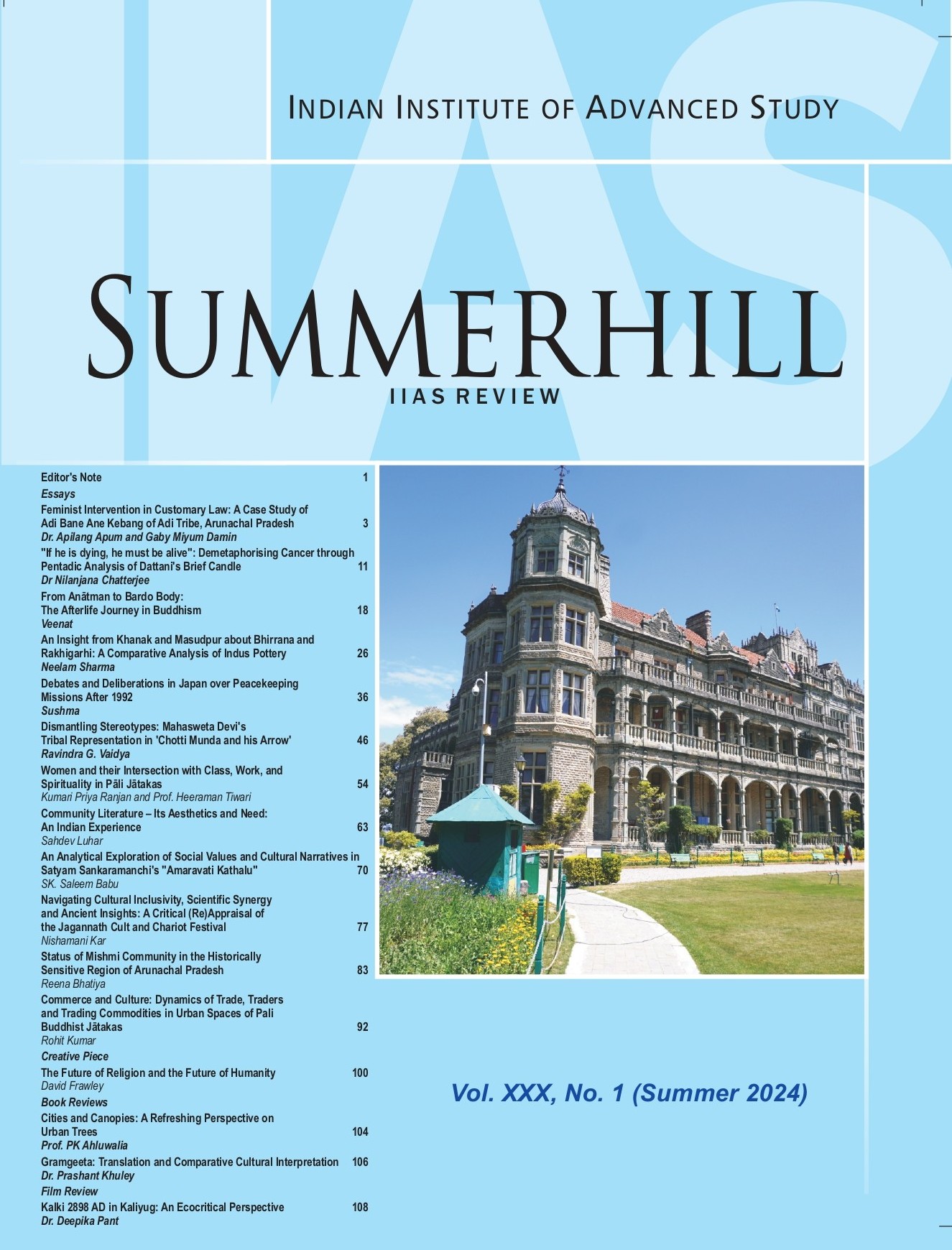Women and their Intersection with Class, Work, and Spirituality in Pali Jatakas
DOI:
https://doi.org/10.70752/ShIIASR.30.1.2024.54-62Keywords:
Darika,, Ascetic Misogyny, Institutional Androcentrism,, Soteriological Inclusiveness, Soteriological androgyny,, ArahatsAbstract
Historical writing has traditionally marginalized women often stemming from gender stereotypes that portray women as less capable leading to unequal treatment and confining them to patriarchal stereotypes. This approach shifted in the 1970s with feminist movements that introduced gender-based methodologies, emphasizing a sharp deviation from patriarchy and establishing gender relations as key forces in history. However, reconstructing women’s histories in early India remains challenging due to the biases in Brahmanical texts, prompting scholars to turn to alternative sources like Pali Buddhist J?takas. The J?takas, a collection of tales depicting the Buddha’s past lives, also reflect societal structures and offer insights into women’s roles in early urban spaces. J?takas reveal diverse representations of women in public and private spheres, including courtesans (ga]nik?s), slaves, and labourers. Often depicted as financially independent and socially influential, courtesans occupied stratified roles based on beauty, status, and patronage. In contrast, slave women were largely relegated to domestic and agrarian labour, reflecting economic and social hierarchies. The narratives also highlight women’s participation in textile production and other public economic activities, particularly among lower castes, while upper-caste women remained largely confined to household roles. Although some women, such as queens, appear in positions of narrative importance, their portrayals often reinforce patriarchal ideologies. The J?takas, therefore, provide a nuanced lens to study the condition of women in early Indian society, capturing both women’s subordination and agency within evolving social and economic frameworks.





